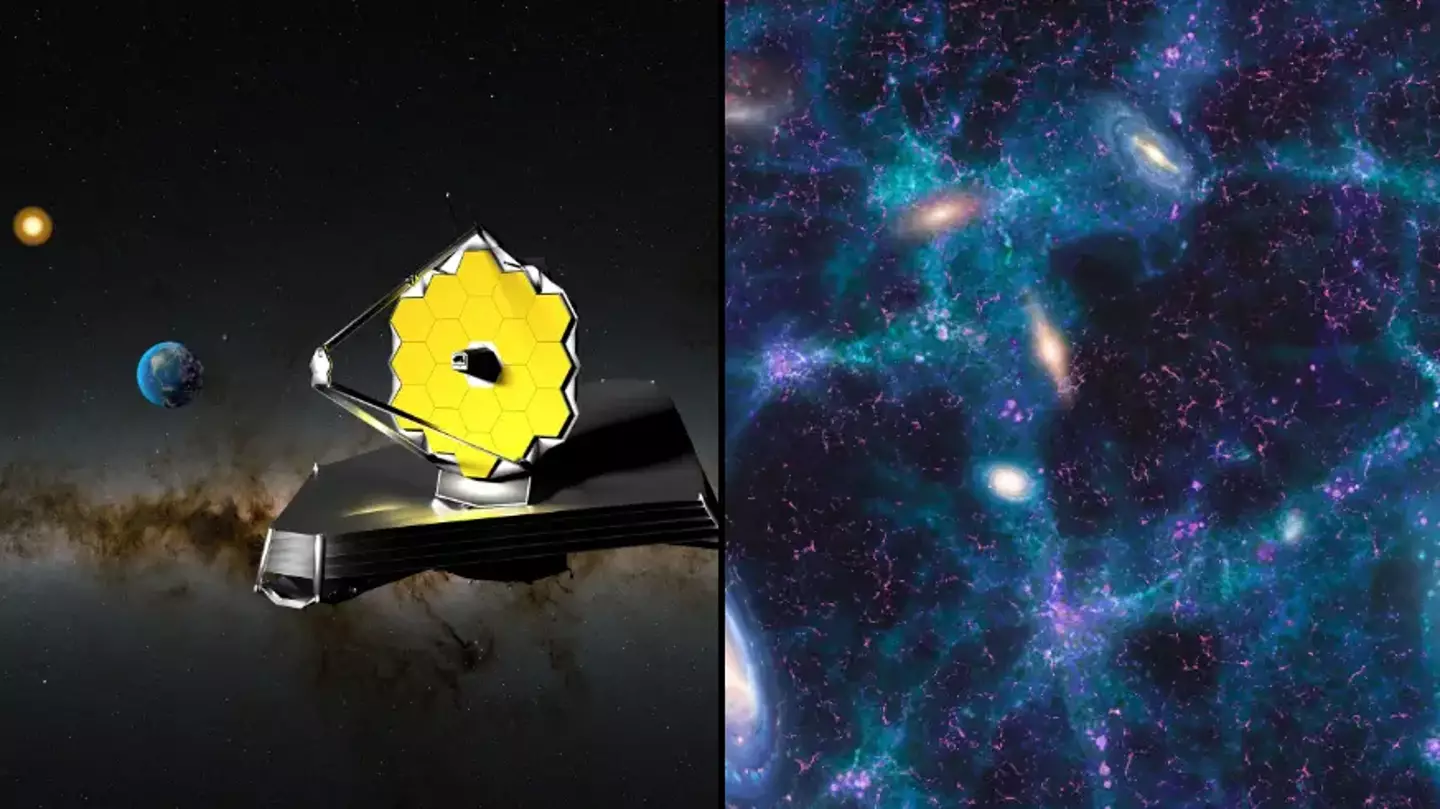
Space never ceases to amaze us, but what the James Webb Space Telescope (JWST) just found has changed everything that we know about the universe.
The JWST is an advanced version of the 1990 Hubble telescope, which was launched into space in December 2021.
However, the JWST has made numerous discoveries in space, some of which could even point to there being life beyond our small planet.
It also found that potential planets could be forming right in front of us after discs and dust gathered around two stars.
But now, it’s found something bigger.
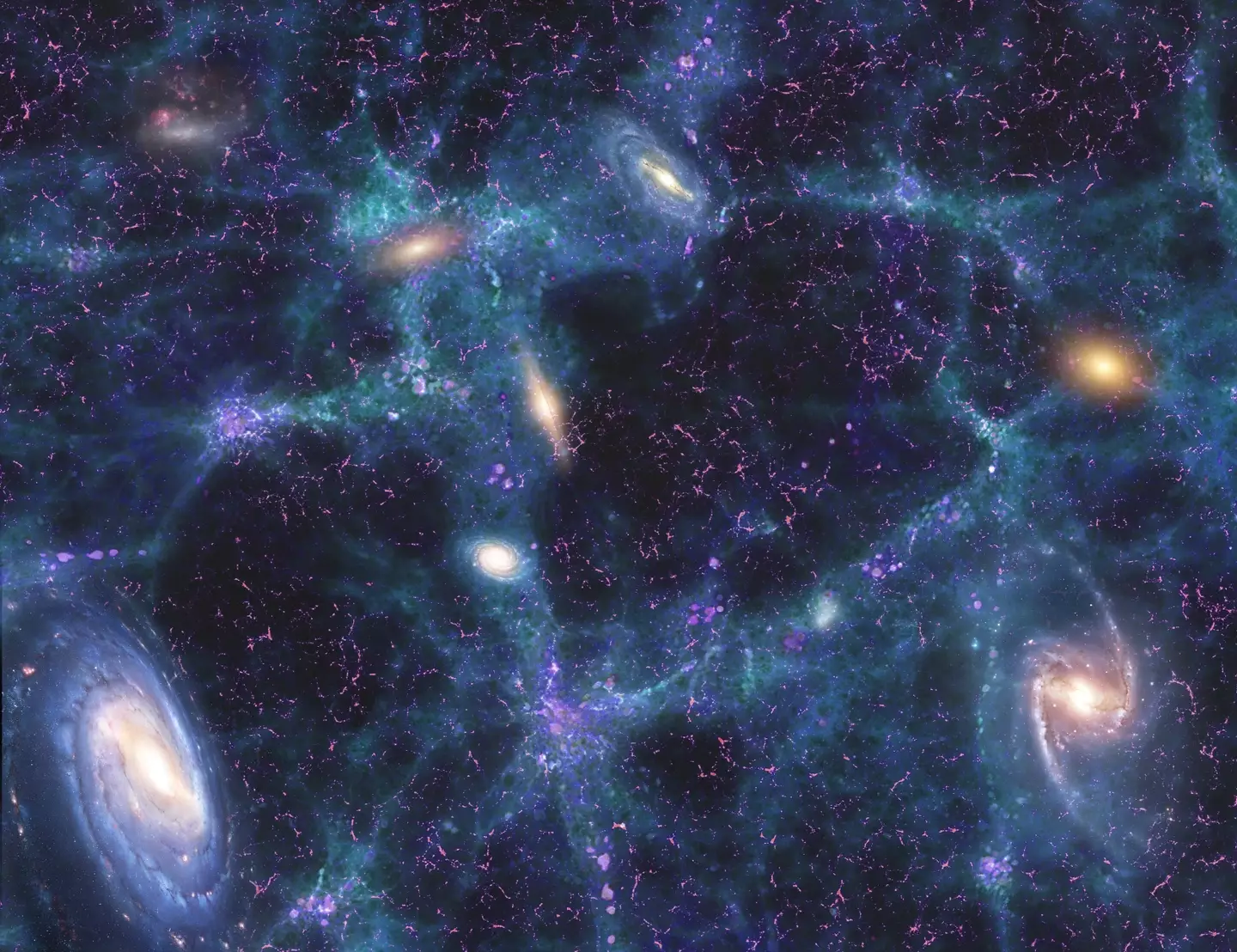
The universe is vast (Getty Stock Images)
While we’re just a speck of dust in the cosmos, we’ve been trying to figure out all that there is to know about the universe for quite some time.
That means we’ve tried to date back to how old the universe is.
For years, cosmologists have believed the universe is approximately 13.8 billion years old, but new JWST findings suggest that this may be incredibly inaccurate.
New research had found that the universe’s age is probably more likely to be 26.7 billion years, which accounts for the JWST’s observations.
Data from the 1990s’ Hubble Space Telescope launch meant that originally, people thought it was between 7 billion to 20 billion years, and later agreed on 13.8 billion years.
It all began with the presence of ‘impossible early galaxies’.
These galaxies emerged during the cosmic dawn, which occurred around 500 to 800 million years post-Big Bang, and really shouldn’t have evolved disks so quickly.
So, surely they had been created earlier than we thought?

The JWST changed everything (Getty Stock Images)
Explaining how the universe’s age was challenged, Rajendra Gupta from the University of Ottawa told The Brighter Side: “I attempted to marry the conventional big-bang model with the tired light theory, hoping to account for both supernovae and JWST data.
“While this expanded our universe’s age to 19.3 billion years, it couldn’t entirely account for the JWST data.”
That’s when he tried combining the tired light theory with an evolving model based on the coupling constants, which gave a lot better results. Still with us?
Thanks to this, the hybrid model accounted for the JWST’s observations and also put the universe’s age to 26.7 billion years.
Although the Hubble Space Telescope had already guessed at the ‘impossible early galaxy’ issue, the JWST’s launch in December 2021 strengthened these claims.
Now, scientists have a clear picture of when the universe came to be, and this could help them in the future to recalculate the date of emerging planets, among other things.
As the universe continues to be a vast space of confusion for us to wrap our heads around, at least this one thing has been put to bed at last.
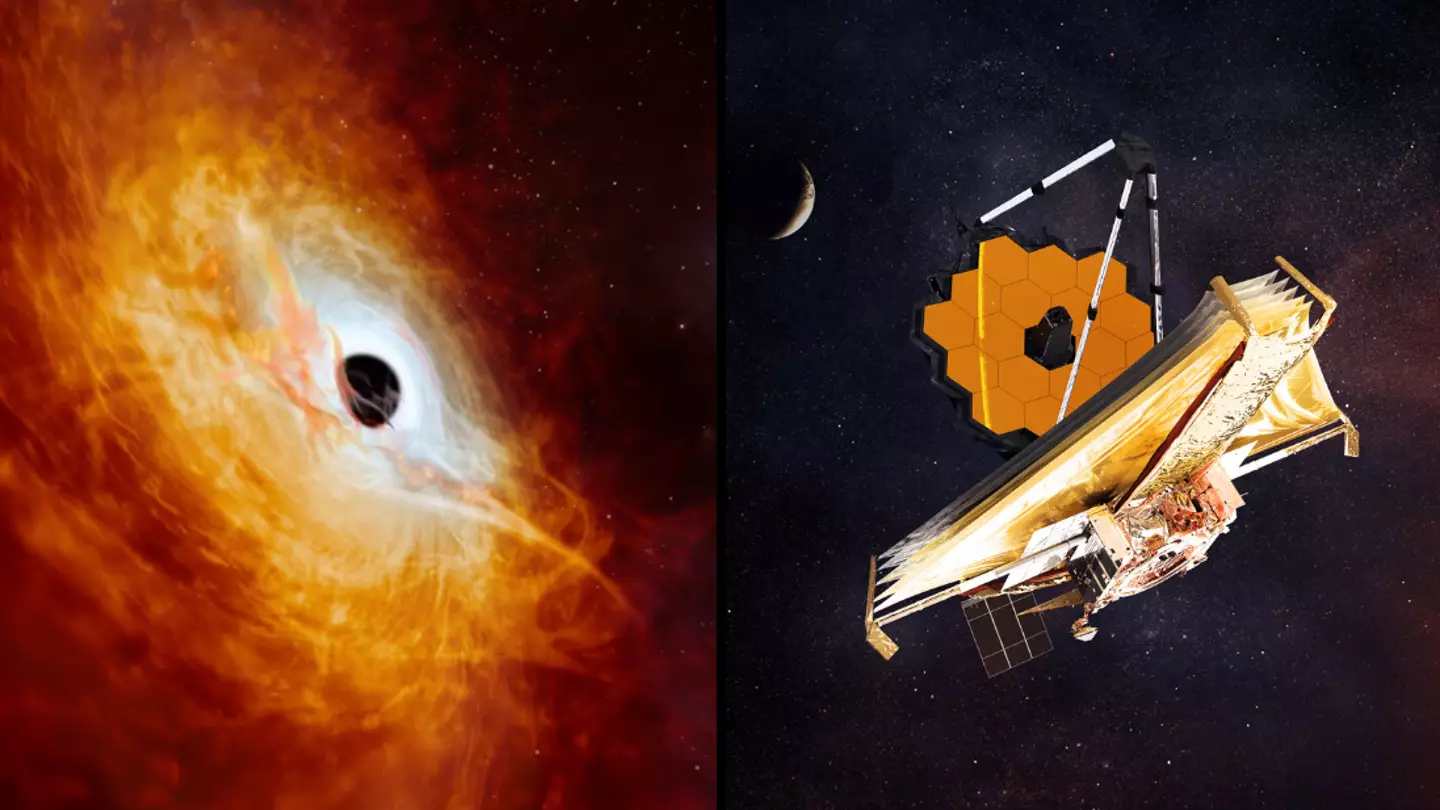
Space experts from the Massachusetts Institute of Technology (MIT) have made a big discovery from close to the beginning of time concerning supermassive black holes and dark matter.
Using the $10 billion (£7.7 billion) James Webb Space Telescope, MIT astronomers have been able to effectively look back in time to more than 12 billion years ago.
The telescope, dubbed the James Webb or JWST, was together by NASA alongside the European Space Agency (ESA) and the Canadian Space Agency (CSA) and is humanity’s most advanced piece of equipment when it comes to discovering the cosmos’ hidden secrets.
The technology on board the telescope means it can take images from deep in space using its Near Infrared Camera (NIRCam), which is effectively a real life time machine.
It’s a bit hard to comprehend, but it all comes down to how light travels.
What is being captured by the telescope is light that has, in some cases, travelled billions of years to get to the telescope.
So the image captured by the JWST is ‘new’ to us but is, in fact, up to 13 billion years old – depending on where it comes from.
Now, using the James Webb, MIT boffins have been observing something called quasars, which are the extremely bright cores of galaxy that has a supermassive black hole right in the middle of it.
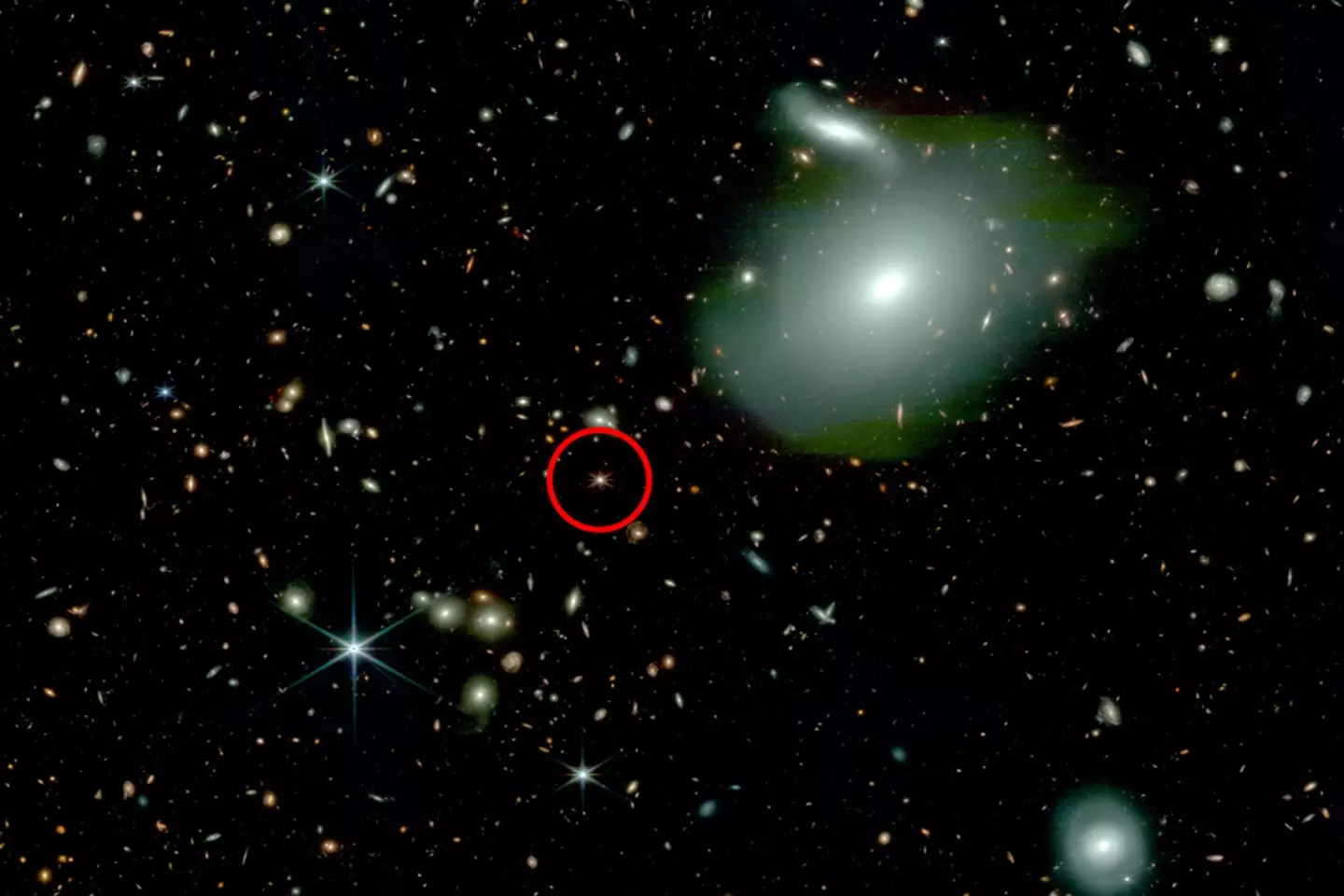
:This image, taken by NASA’s James Webb Space Telescope, shows an ancient quasar (circled in red) with fewer than expected neighboring galaxies (bright spheres), challenging physicists’ understanding of how the first quasars and supermassive black holes formed (Christina Eilers / EIGER team)
As the black hole draws in surrounding gas and dust, it blasts out an enormous amount of energy, making quasars some of the brightest objects in the universe.
Using the JWST to look at five ancient quasars from some 13 billion years ago, their existence has left scientists puzzled given that they exist in huge parts of space where there is not much else. Black holes need matter to grow, according to science.
“Contrary to previous belief, we find on average, these quasars are not necessarily in those highest-density regions of the early universe. Some of them seem to be sitting in the middle of nowhere,” says Anna-Christina Eilers, assistant professor of physics at MIT.
“It’s difficult to explain how these quasars could have grown so big if they appear to have nothing to feed from.”
There is a possibility that these quasars may not be as isolated as they appear, MIT says, but are instead surrounded by galaxies that are heavily shrouded in dust and therefore hidden from view.
But is dark matter also playing a part?

CGI of the James Webb Space Telescope floating through space (JPL / NASA)
For those who haven’t nerded it up on Wikipedia entries before, dark matter is an as-yet unknown form of matter that has no other interactions with its surroundings other than through gravity.
After the Big Bang, the experts in space believe the early universe had dark matter pulling and pushing gas and dust, before eventually coming together to form objects such as planets and stars.
“The cosmic web of dark matter is a solid prediction of our cosmological model of the universe, and it can be described in detail using numerical simulations,” says co-author Elia Pizzati, a graduate student at Leiden University. “By comparing our observations to these simulations, we can determine where in the cosmic web quasars are located.”
For Eilers, the biggest question remains: how did these supermassive black holes form in isolated locations when the universe was so young? Well, it is likely that it is not due to dark matter, according to the experts, due to how the universe was at the time.
Instead, the MIT team simply don’t know yet. Eilers said: “If there’s not enough material around for some quasars to be able to grow continuously, that means there must be some other way that they can grow, that we have yet to figure out.”
Eilers and her colleagues report their findings in a paper appearing in the Astrophysical Journal
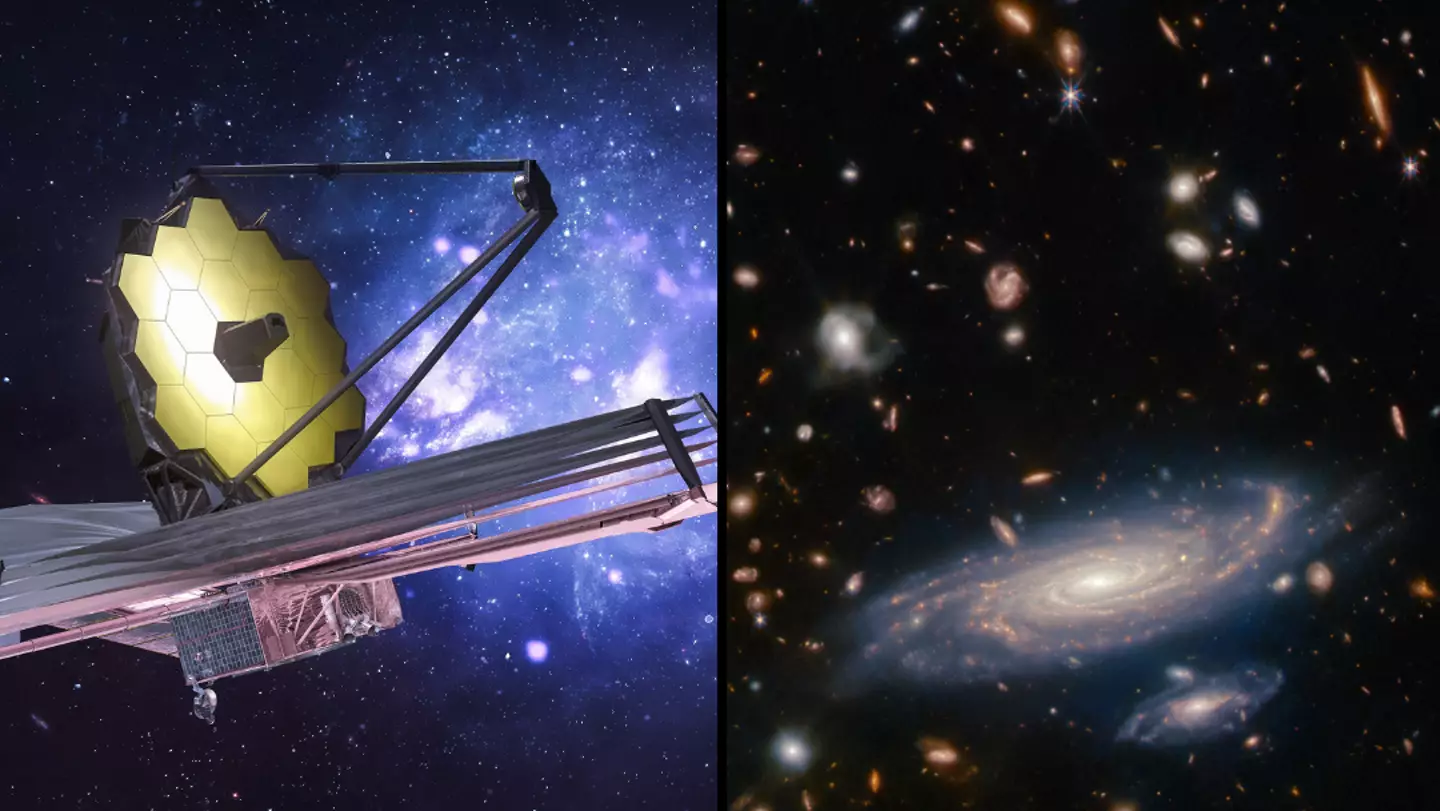
Dubbed the James Webb Space Telescope (JWST), it was launched in to space back in December 2021, and in the two and a bit years since, the telescope has already made some remarkable discoveries about the cosmos.
Some of what it has found has even proved longstanding scientific theories ‘seriously wrong’.
Our obsession with space goes back to the 1960s when the first man was launched in to orbit, followed by the iconic 1969 Moon Landing.
The launch of the JWST means we can now see light from right after the the Big Bang, as well as the first stars to ever be formed across the entire universe.
A successor to the legendary Hubble Space Telescope, its opening up a whole new world of discovery for the scientific community.
And it just keeps on giving following one new discovery surrounding black holes.
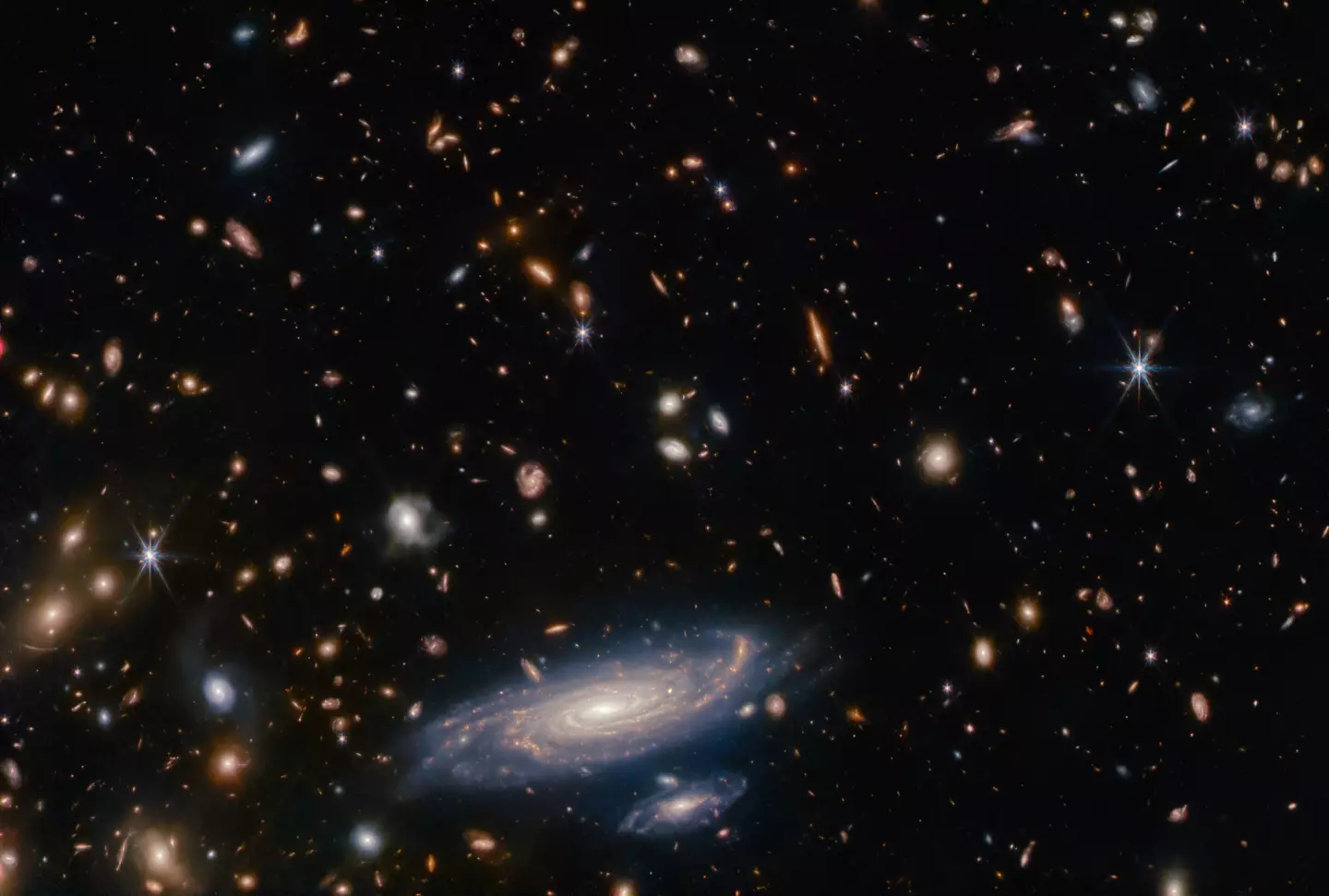
ESA/Webb, NASA and CSA, A. Martel
A go to for those who like to dabble in very amateur astronomy reading, black holes are areas of such immense gravity that nothing, not even light, can escape from it. Their standing within the scientific field has seen them the focus of many sci-fi shows and films, with one of the more recent being Interstellar.
Now, a critical piece of the puzzle when it comes to understanding the early days of the universe has been discovered thanks to the JWST.
The telescope has a number of ‘eyes’ that can detect infrared signalling. And now they have found a small bunch of red dots that have been identified as some of the earliest galaxies ever formed.
And in a major development, academics say it now serves as a huge clue to unlocking the secrets of how galaxies and black holes started out.
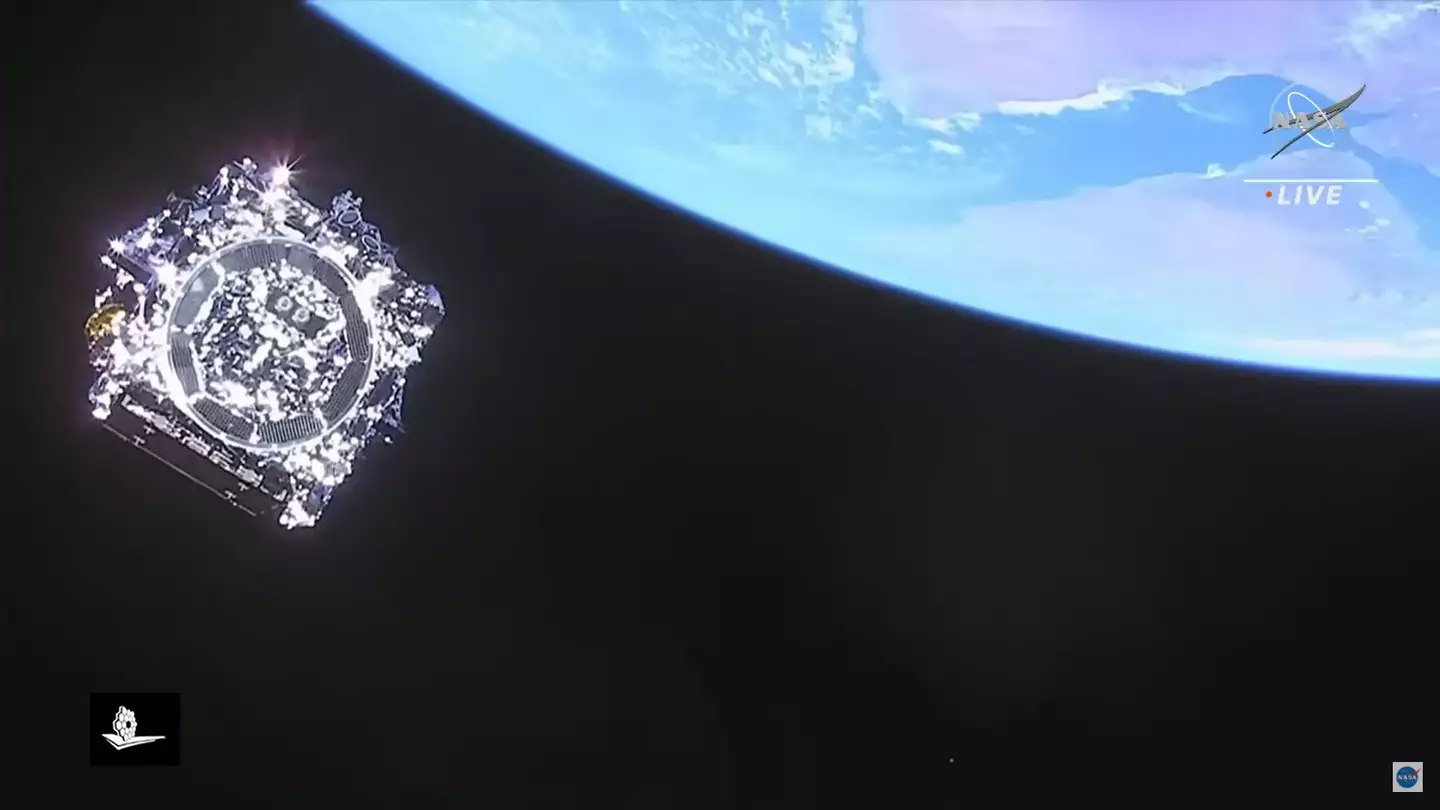
Arianespace, ESA, NASA, CSA, CNES
JILA Fellow and University of Colorado Boulder astrophysics professor, Mitch Begelman, said: “The astonishing discovery from James Webb is that not only does the universe have these very compact and infrared bright objects, but they’re probably regions where huge black holes already exist.
“That was thought to be impossible.”
The work of Begelman and a team of fellow astronomers was published in The Astrophysical Journal Letters.
Explaining the traditional concept of how black holes are formed, Begelman said: “The idea was that you went from this early generation of stars to the galaxies really becoming mainly dominated by stars. Then, towards the end of this process, you start building these black holes.”
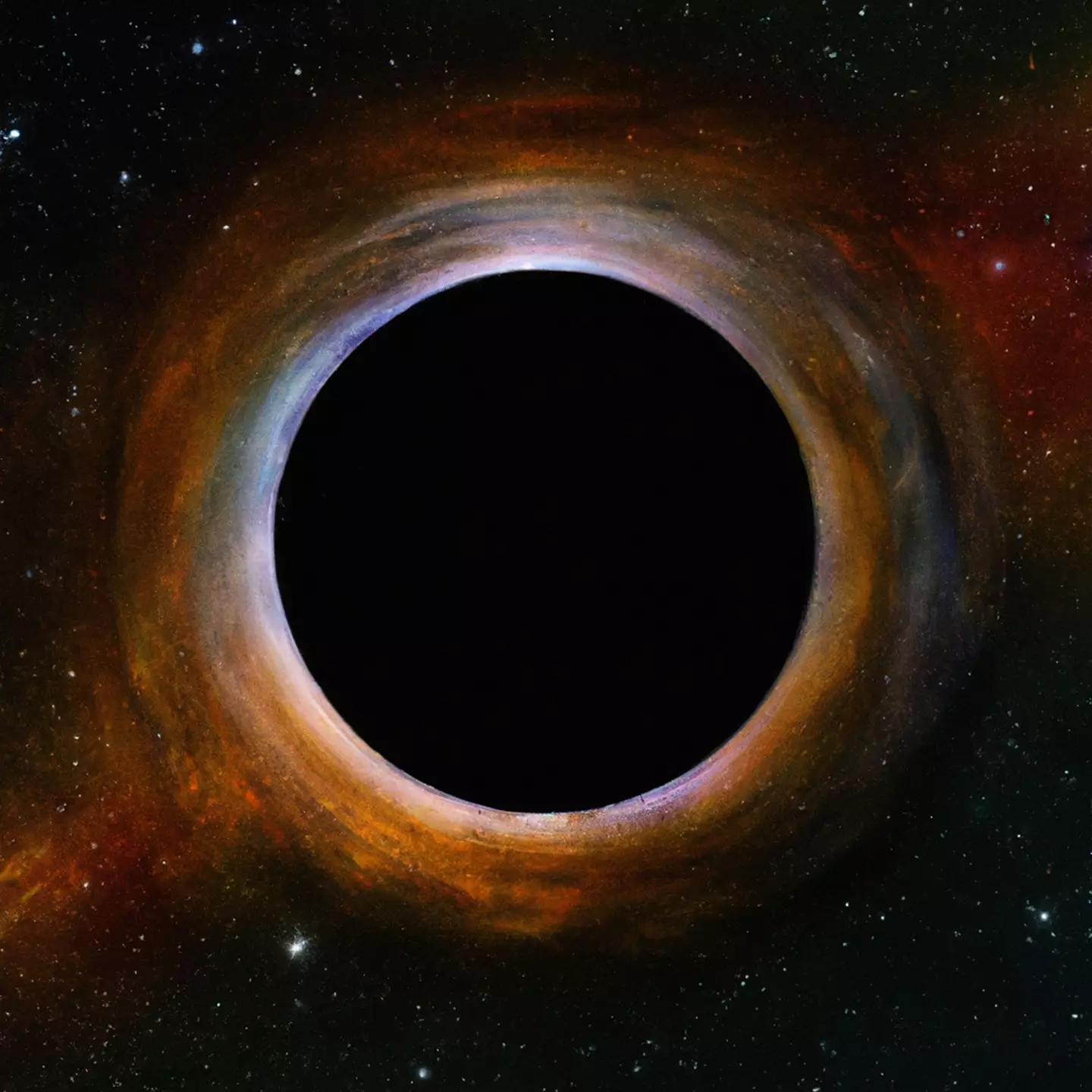
Getty Stock Images
These black holes that are studied are commonly thought to be collapsed stars that has no more fuel to burn.
But the red dots found by JWST indicate the first galaxies and their stars co-existed with black holes.
“[This new data] looks like [the process is] reversed, that these black holes formed along with the first stars, and then the rest of the galaxy followed,” says Begelman.
“We’re saying that the growth of the black hole, at first, promotes the stars. And only later, when conditions change, does it flip into a mode of turning off the stars.”
The theory is now to be studied within the scientific community with modelling essential for others to put their backing behind it.
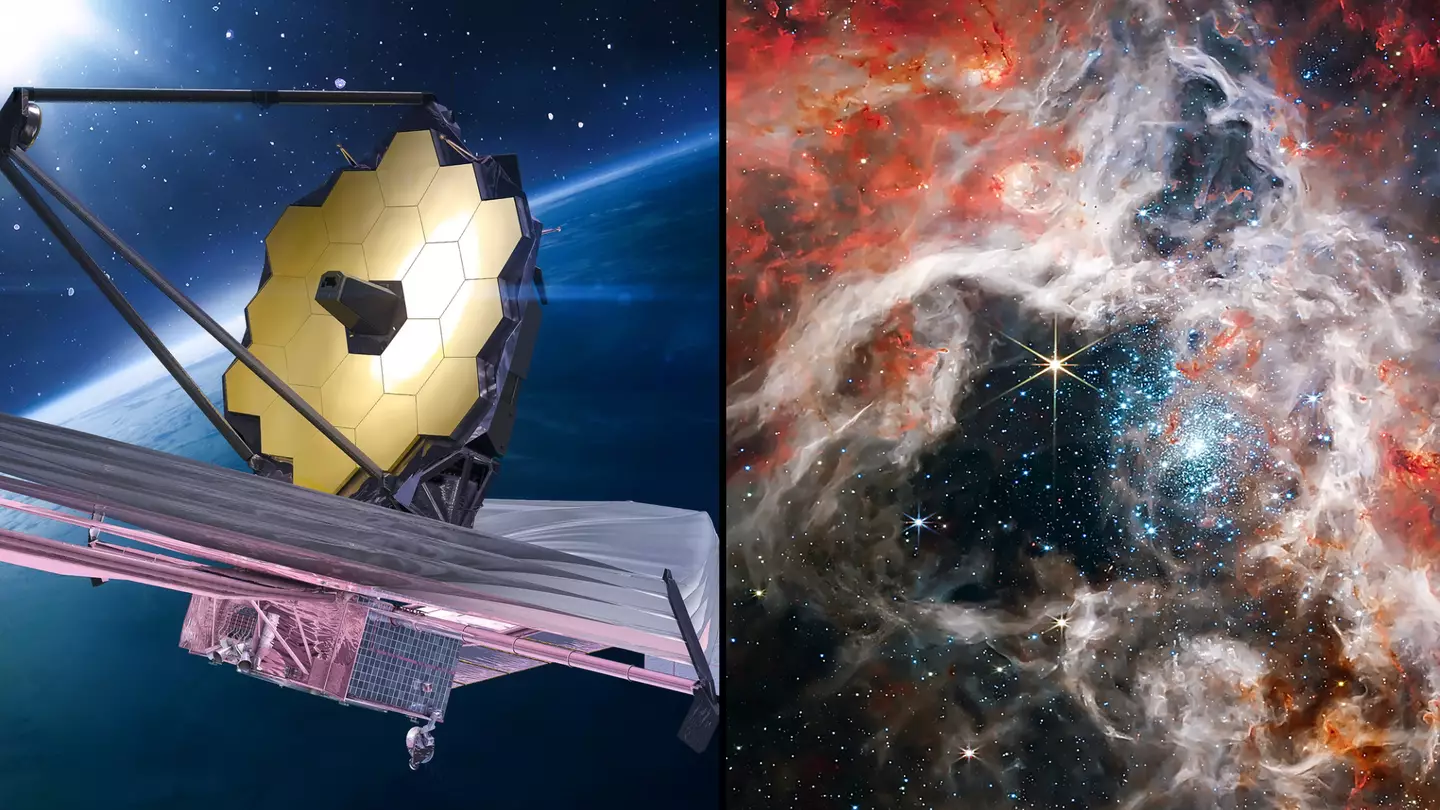
The James Webb Space Telescope (JWST) was launched into space in December 2021, acting as a more advanced version of the legendary Hubble telescope, which was launched in 1990.
Ever since JWST was propelled into space, it has made numerous huge discoveries, including advances in the search for life beyond our planet.
The revolutionary telescope has captured several high resolution images of galaxies, stars being formed, early stage black holes and more.
Aside from cool, sharper photos, JWST has also recently made a significant contribution to physics, seemingly disproving what the Hubble telescope found all those years ago.
Now, astronomers have used both the Hubble and James Webb Space Telescopes to confirm one of the outstanding problems in physics.
That is, that the universe actually appears to be expanding at varying speeds, depending on where we choose to look.
This is called the Hubble tension, and could potentially upend the world of cosmology for good.
JWST last year confirmed the initial measurements carried out by Hubble in 2019, solidifying the theory.
On 6 February, the study was published in the Astrophysical Journal Letters, highlighting that our understanding of the universe could be very, very wrong.
Lead study author Adam Riess, professor of physics and astronomy at Johns Hopkins University stated: “With measurement errors negated, what remains is the real and exciting possibility we have misunderstood the universe.”
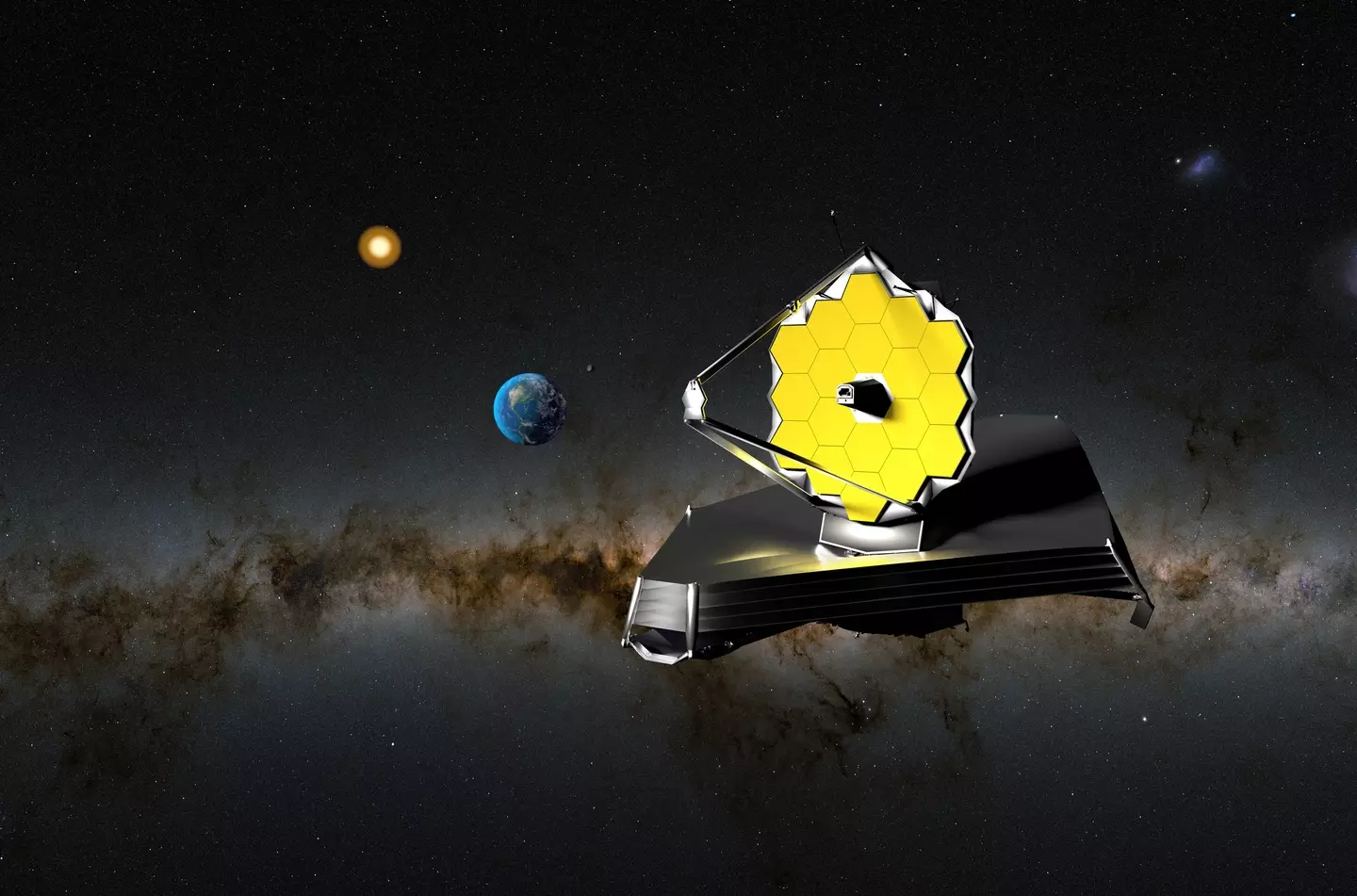
Getty Stock Photo
Reiss, alongside Saul Perlmutter and Brian P. Schmidt, won the 2011 Nobel Prize in physics for discovering dark energy in 2011, which is the little-known force that is behind the universe’s continued expansion.
There are two ways to figure out the Hubble constant – a value that describes the universe’s expansion rate.
The first way is basically through the Big Bang’s leftovers, which are tiny fluctuations in the cosmic microwave background.
From 2009 to 2013, astronomers figured out that this figure was roughly 46,200 mph per million light years, or about 67 kilometres per second per megaparsec (km/s/sMpc).
The second way is to use pulsating stars, also known as Cepheid variables.
Astronomers use the outer layers of dying stars, which flicker like broken street lights sin the distance.
By measuring its brightness, these Cepheid stars can be chained into a ‘cosmic distance ladder’, which allows us to look further into the past of the universe.
Using this, an exact number can be pinpointed that reveals the speed of the universe’s expansion.
By using the second method, Reiss and his colleagues found that the universe’s expansion rate is actually about 74 km/s/Mpc, a value much higher than the previously thought 67 km/s/Mpc.
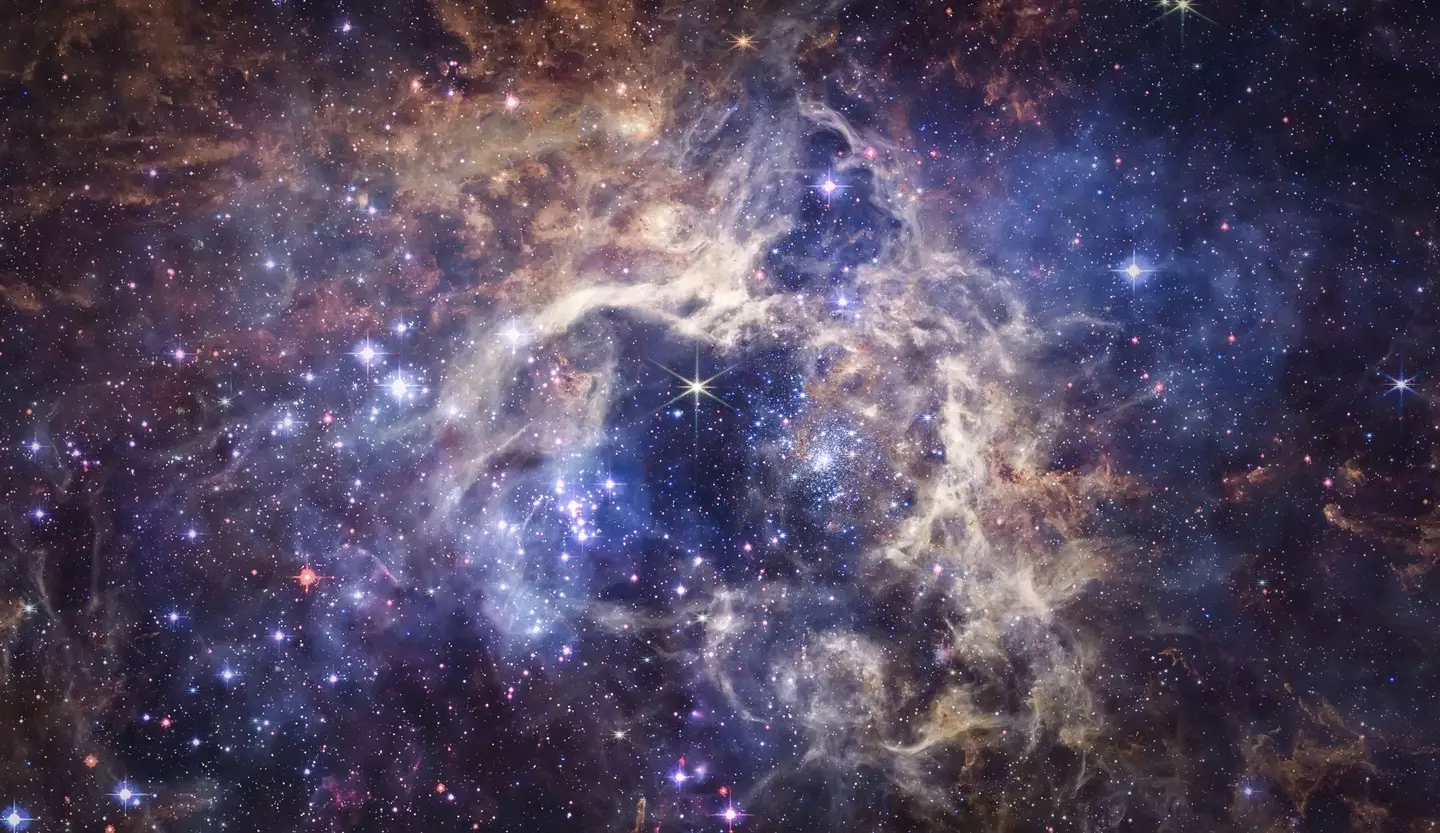
Getty Stock Photo
The world of Cosmology has been catapulted into uncertainty following this discovery.
Nobel Prize winning astronomer David Gross called it a ‘crisis’ at a 2019 conference.
Initially, the discovery was thought to be a measurement error by confusing Cepheid stars with regular stars in the Hubble’s lens, but the much more accurate JWST disproved these claims, confirming the new discovery.
Reiss observed 1,000 other Cepheid stars in five separate galaxies as far away as 130 million lightyears from Earth, further confirming their findings on the Hubble constant.
He explained: “We’ve now spanned the whole range of what Hubble observed, and we can rule out a measurement error as the cause of the Hubble Tension with very high confidence,
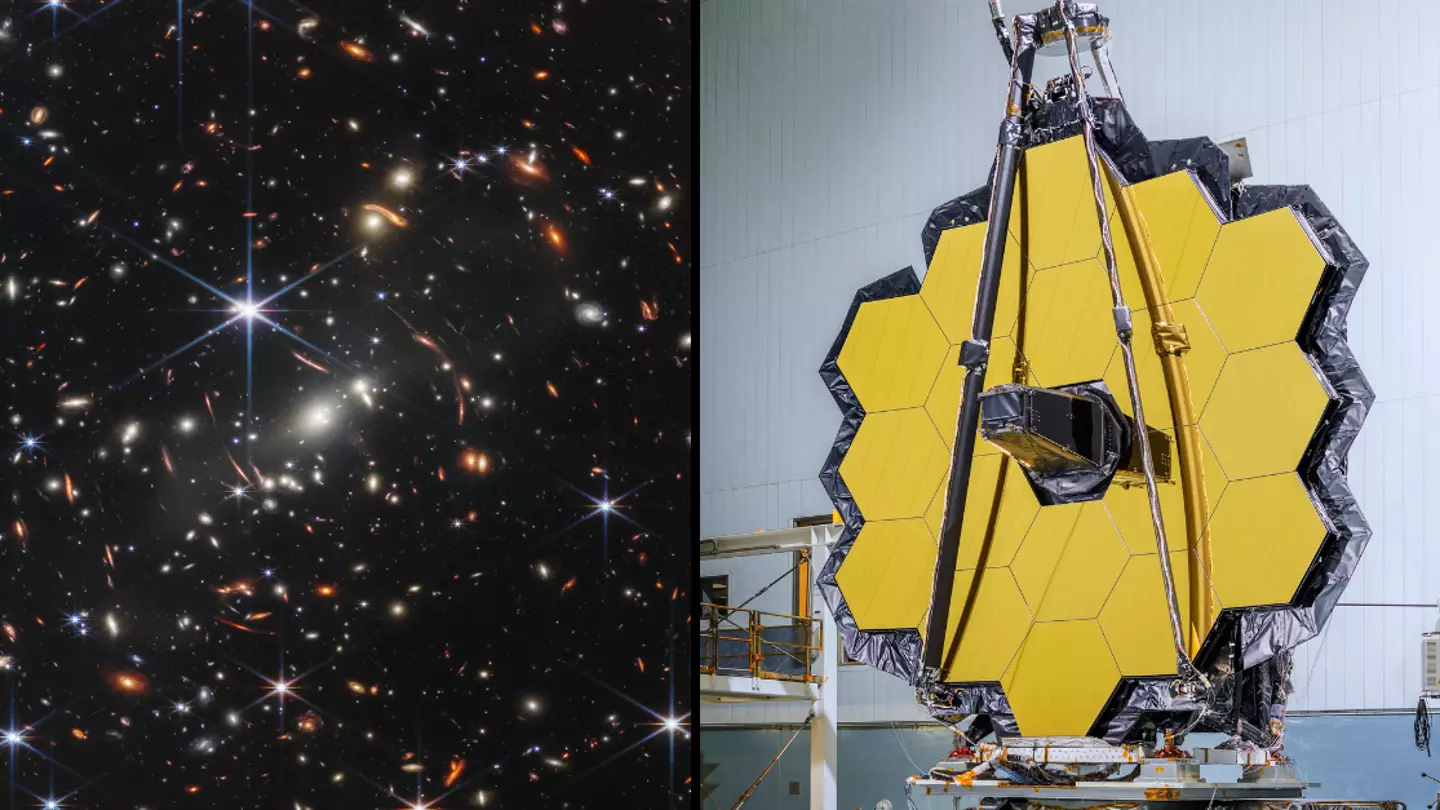
We are of course talking about the James Webb Space Telescope (JWST), a $10 billion (£8 billion) piece of kit that has revolutionised remote space exploration for almost two years.
Put together alongside the European Space Agency (ESA) and the Canadian Space Agency (CSA), the JWST was shot into space on Christmas Day 2021, sending its first pictures back to Earth in July the next year.
Now, the telescope has found one of the essential ingredients to life shortly after the Big Bang itself some 13.8 billion years ago.
That’s because the JWST acts as a real-life time machine, taking images from deep in space with these pictures at huge distances away from what is being captured by its Near Infrared Camera (NIRCam).
And because of how light travels, when looking at objects that are far away, we see them not as they are but as they were.
The same would be said of alien life looking at Earth – they wouldn’t see us now but Earth a long, long time ago depending on how many light years away from our planet they are.
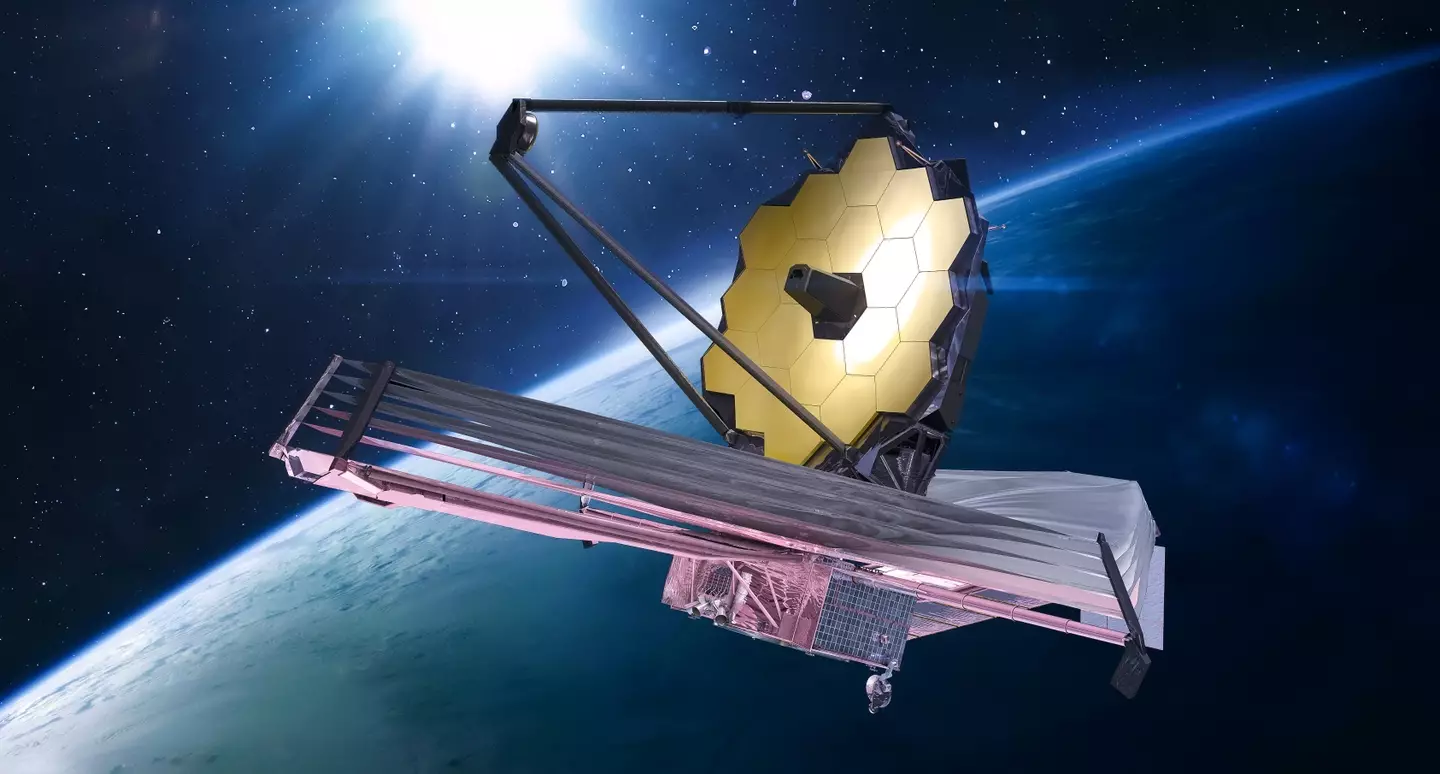
The James Webb Space Telescope has made a remarkable discovery (NASA/Getty Stock Images)
The lastest discovery by Webb is a massive cloud of carbon in a distant galaxy that came about just 350 million years after the start of the universe.
That might sound like a long time after the Big Bang – because it is – but it tells us something that might make scientists have to have a rather large re-think.
A paper on the discovery, published in scientific journal Astronomy & Astrophysics, hints at what we might now have to reassess.
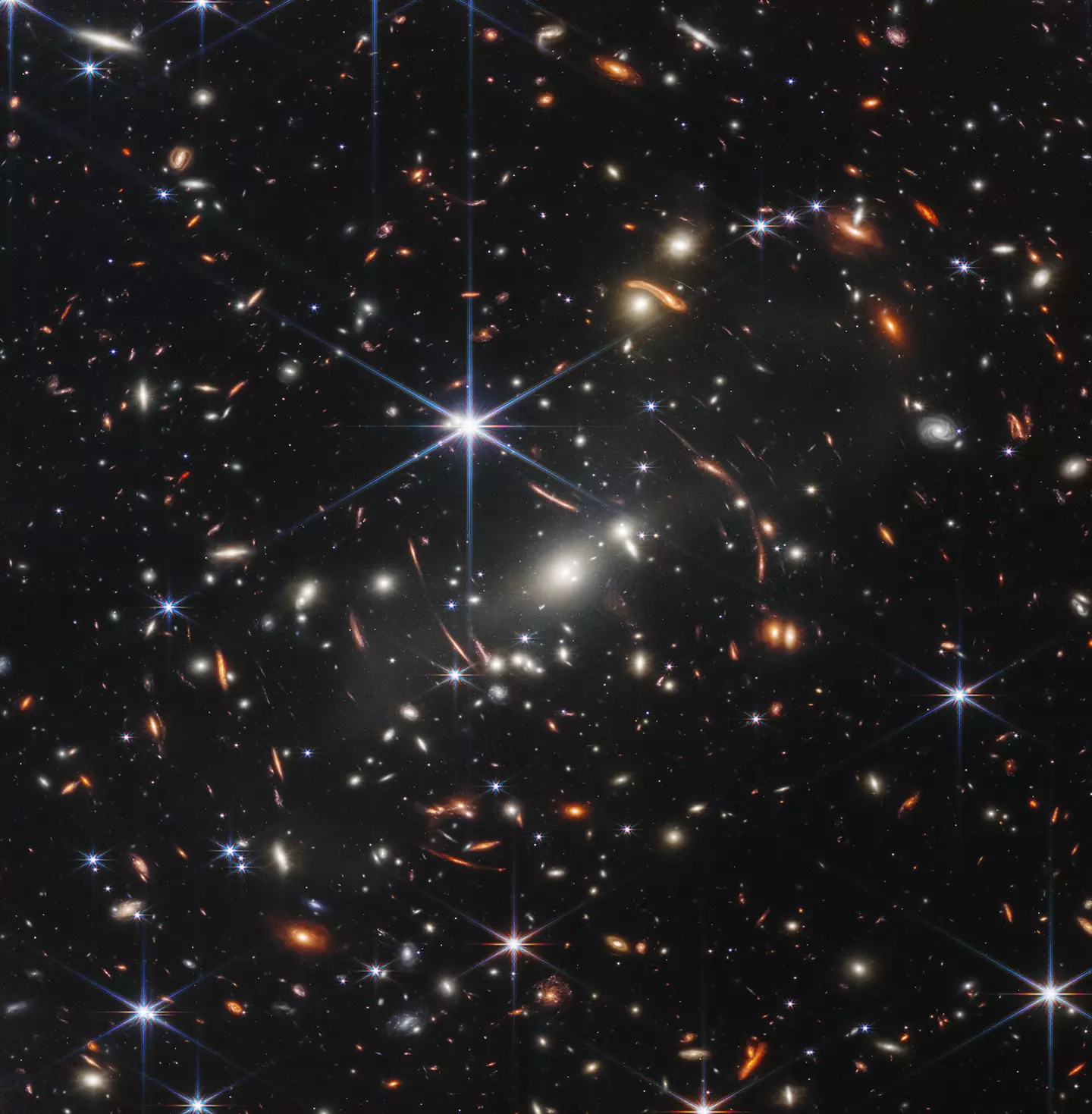
An amazing image of deep space captured by the JWST (NASA, ESA, CSA, STScI)
Roberto Maiolino, co-author of the paper and professor of experimental astrophysics at the Kavli Institute for Cosmology at the University of Cambridge, said in a statement: “Earlier research suggested that carbon started to form in large quantities relatively late—about one billion years after the Big Bang.
“But we’ve found that carbon formed much earlier—it might even be the oldest metal of all.”
Lead author Dr. Francesco D’Eugenio, from the Kavli Institute for Cosmology at Cambridge, told Forbes that it was the first confirmed detection of a chemical element outside of the earliest known elements produced by the Big Bang itself.
And given that the Big Bang only created hydrogen, helium and lithium, the carbon has to have been made inside stars.
He said: “The very first stars are the holy grail of chemical evolution. Since they are made only of primordial elements, they behave very differently to modern stars.
“By studying how and when the first metals formed inside stars, we can set a time frame for the earliest steps on the path that led to the formation of life.”
D’Eugenio added: “Because carbon is fundamental to life as we know it, it’s not necessarily true that life must have evolved much later in the universe.
“Perhaps life emerged much earlier — although if there’s life elsewhere in the universe, it might have evolved very differently than it did here on Earth.”


